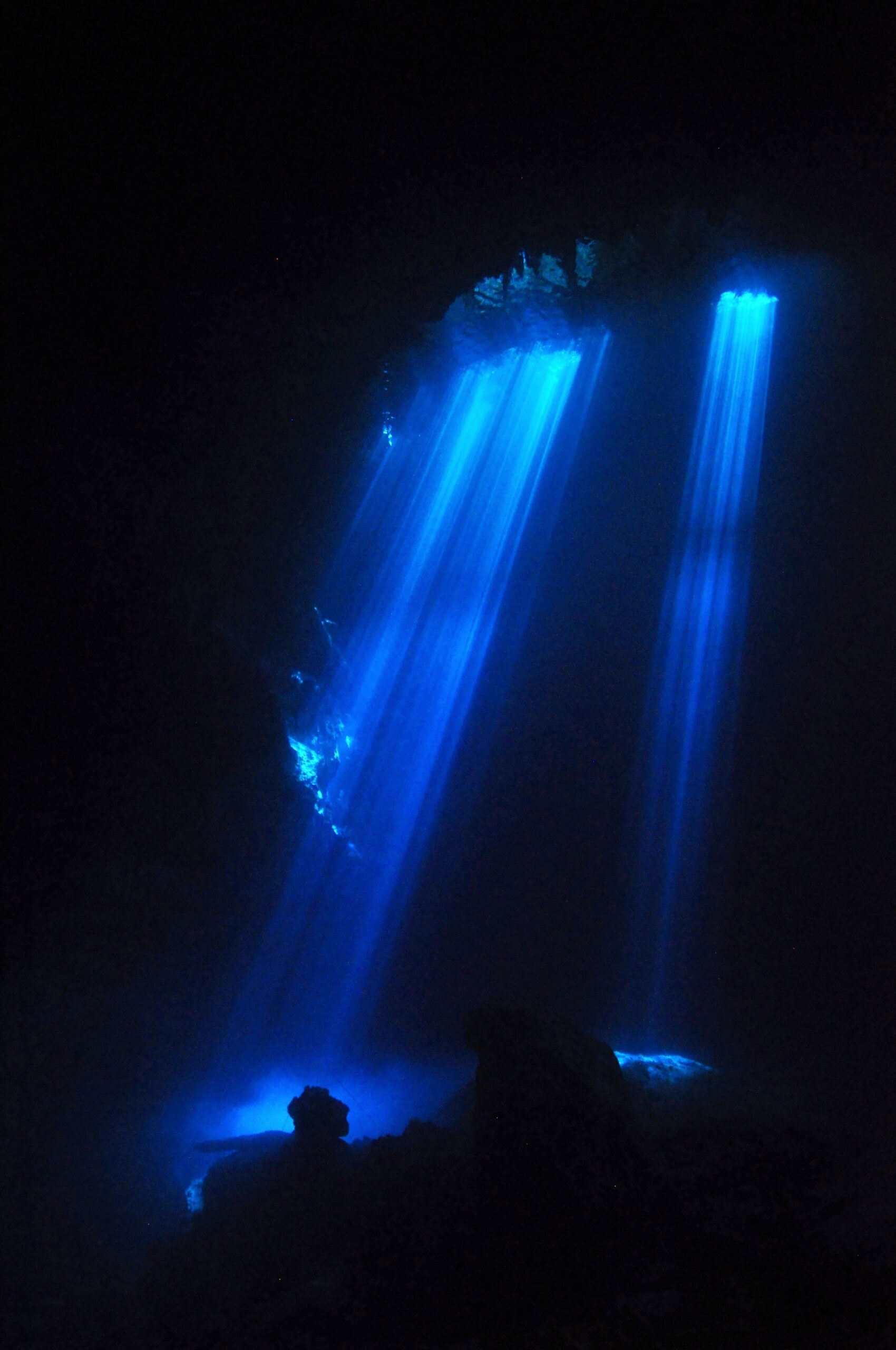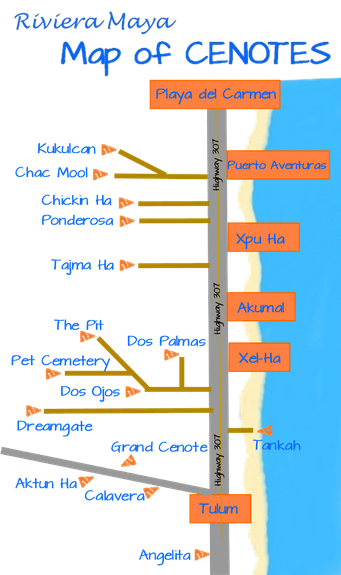Photo credit: Ivan Ayala, Triton Productions
Cenote Diving
Diving in a cenote is an exciting adventure!
Cenotes are found only in this part of the world and allow certified recreational divers to explore something completely different!
Moreover, the world’s two longest underwater cave systems (Sac Actun 376km/234miles and Ox Bel Ha 339km/211miles), with their spectacular formations and an amazingly clarity of the water, lie under the jungle in the Tulum area.
Over the past years, the cave diving community has established the cenote diving distinction to allow recreational divers to safely experience the wonders of this underwater world without becoming cave certified and equipped. And, nowadays, certified divers with a minimum of an open water, or any equivalent first level certification, can discover many different cenotes.
We offer a big variety of cenote diving tours in the area between Playa del Carmen, Akumal, and Tulum. Each cenote is different and has its own characteristics and astounding beauty!
Our professional guides are guiding all our cenote diving tours in the “daylight zone” of solid overhead in line with internationally accepted cenote diving standards. And, most importantly, all our guides are full Cave Diver certified with a minimum of Divemaster or Open Water Diver Instructor certification as well as are CREER (Comité Regional de Espeleobuceo, Ecología y Regulación) certified Cenote Dive Guides. They have hundreds of dives in the local environment and are knowledgeable and experienced in the local cenotes systems above and below the ground.
If you enjoy diving and are in the area, don’t miss the opportunity to try cenote diving for a memorable experience!


Guidelines to be followed for safe cenote diving
As with any other activity, there are clear and distinct limitations to cavern diving and it is of prime importance that divers be well aware of the limitations imposed and strictly adhere to those limits at all times.
- Never exceed the ratio of divers to guide which is 4:1 (4 single tank divers conducted by a guide with double tanks);
- Divers shall not dive deeper than they have been previously certified. The maximum depth for cavern dives is limited to 100 ft/30 m;
- Dives must begin with a minimum visibility of 40 ft/12 m. This distance is determined by the ability of the diver to clearly recognize and acknowledge a lighted hand signal;
- Divers must always stay within the “daylight zones” of the underground river system…though it is not necessary to have view of the physical opening to the cavern, clear view of ambient light radiating through that opening must be plainly visible;
- Maximum penetration is limited to 200 ft/60 m from where you can surface and breath air without the aid of scuba equipment;
- Divers must remain within the no-decompression limits of the dive computer;
- No restrictions (narrow passages)…at all times, two divers must be able to comfortably pass through the area next to each other;
- Divers must maintain a continues guideline (life line) to open water as a visual reference…never go beyond the cavern line areas;
- Diver must be equipped at least with one light (the sun or daylight is considered as the cavern diver’s primary light source);
- Never make a cavern dive at night. Without natural light, a cavern becomes a cave and access is restricted to only those divers with cave training.
- Follow the instructions of the guide provided during the dive briefing. Instructions include topics such as air supply management by the “rule of thirds;” communication with light signals; the ideal horizontal position and kicking techniques to avoid silting; the use of the proper amount and placement of weights; the “diving on a line” team system; the distance between the divers and their general behavior; safety procedures; environmental respect and conservation.
Contact us for more information or to make a reservation.
